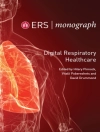Understanding the pathophysiology of Eustachian tube dysfunction is critical for the management of ear disease. The complex anatomy of the Eustachian tube through the base of the skull makes its function difficult to assess and many early attempts of surgical treatment were unsuccessful.
This book discusses anatomy, physiology, pathology, diagnosis and the evolution of surgery of the Eustachian tube. It encapsulates our present knowledge of the principles and present day practice of the management of Eustachian tube dysfunction.
Jadual kandungan
1.Anatomy of the Eustachian tube16
1.1.Systematic anatomy16
1.1.1.Eustachian tube cartilage16
1.1.2.Eustachian tube muscles17
1.1.2.1.Levator veli palatini muscle17
1.1.2.2.Tensor veli palatini muscle17
1.1.2.3.Salpingopharyngeal muscle18
1.1.2.4.Medial pterygoid muscle18
1.1.3.Eustachian tube ligaments18
1.2.Topographic compartments of the Eustachian tube18
1.2.1.Lumen18
1.2.2.Membranous wall19
1.3.References19
2.Physiology of Eustachian tube dysfunction24
2.1.Tubal function24
2.2.Pressure balance of the temporal pneumatic spaces – The role of tubal physiology26
2.2.1.Gas exchanges27
2.2.2.Regulating systems27
2.2.2.1.The in-situ adaptation systems28
2.2.2.2.The central and peripheral nervous regulating system30
2.2.2.3.How the system operates31
2.3.References31
3.Diagnosis of Eustachian tube function36
3.1.Clinical testing36
3.2.Endoscopy36
3.3.Radiology37
3.3.1.Conventional X-ray37
3.3.2.Computed tomography (CT) and Magnetic resonance imaging (MRI)38
3.4.Manometric testing38
3.4.1.Tympanometry38
3.4.2.Nine-step inflation deflation test38
3.4.3.Modified Inflation deflation test39
3.4.4.Forced response test39
3.4.5.Tubomanometry39
3.5.Acoustic testing – Sonotubometry40
3.6.Pressure chamber41
3.7.Electromyography41
3.8.Other methods42
3.9.References42
4.Eustachian tube dysfunction consensus48
4.1.Difficulty defining ETD48
4.2.International consensus of ETD48
4.2.1.Definition48
4.2.2.Symptoms of ETD48
4.2.3.Signs of ETD49
4.2.4.Test for ETD49
4.3.Future work50
4.4.References50
5.Evolution of Eustachian tube surgery52
5.1.Evolutionary techniques52
5.2.Techniques to improve tubal function54
5.3.References59
6.Patulous Eustachian tube64
6.1.Causes of PET64
6.2.Epidemiology64
6.3.Symptoms64
6.4.Diagnosis65
6.5.PET in middle ear diseases and "masked patulous Eustachian tube"68
6.6.Treatment of PET68
6.7.Plugging the Eustachian tube in PET patients through the middle ear69
6.8.References71
7.Surgical techniques and learning curve76
7.1.Pharyngeal access or combined endonasal and transoral approach76
7.2.Contralateral access77
7.3.Ipsilateral access78
7.4.Learning curve79
7.5.References79
8.Laser ablation of the Eustachian tube82
8.1.Selection of patients and pretreatment82
8.2.Practical performance of laser tuboplasty of the Eustachian tube83
8.3.Scientific data84
8.4.Measurement of the Eustachian tube function85
8.5.Discussion of the study results86
8.6.References86
9.Balloon dilation Eustachian Tuboplasty (BET)90
9.1.Technique92
9.2.Diagnostics and indications92
9.2.1.ETDQ-793
9.2.2.Tubomanometry (TMM)93
9.2.3.Eustachian tube score (ETS)94
9.2.4.Patient selection95
9.3.Results95
9.4.Complications96
9.5.Discussion96
9.6.References97
10.BET in chronic obstructive Eustachian tube dysfunction in children100
10.1.Methods101
10.2.Results102
10.2.1.Sociodemographic factors102
10.2.2.Pre-interventional clinical findings102
10.3.Post-interventional clinical findings103
10.4.Discussion104
10.5.Special aspects of Eustachian tube dilation in children105
10.6.Conclusion108
10.7.References109
11.Reusable and disposable instruments for BET112
11.1.Reusable instruments for Tuba Vent® standard length112
11.2.Tuba Instruments114
12.Middle ear surgery and Eustachian tube dysfunction116
12.1.Eustachian tube dysfunction and its differential diagnosis116
12.2.Middle ear surgery in patients with middle ear ventilation problems117
12.3.Tympanoplasty and balloon dilation of the Eustachian tube118
12.4.References120
Index124












